Results 11,051 to 11,060 of 12089
Thread: Anandtech News
-
03-16-21, 06:49 PM #11051
Anandtech: Micron Abandons 3D XPoint Memory Technology
In a sudden but perhaps not too surprising announcement, Micron has stated that they are ceasing all R&D of 3D XPoint memory technology. Intel and Micron co-developed 3D XPoint memory, revealed in 2015 as a non-volatile memory technology with higher performance and endurance than NAND flash memory.
Intel has been responsible for almost all of the commercial volume of 3D XPoint-based products, under their Optane brand for both NVMe SSDs and persistent memory modules in the DIMM form factor. Micron in 2016 announced their QuantX brand for 3D XPoint products, but never shipped anything under that brand. Their first and only real product based on 3D XPoint was the X100 high-end enterprise SSD which saw very limited release to close partners. Micron has now decided that further work to commercialize 3D XPoint memory isn't worth the investment.
Micron currently owns the only fab equipped to mass-produce 3D XPoint memory: the Lehi, Utah fab that was formerly the home of the Intel-Micron flash and 3D XPoint joint venture IMFT. Intel and Micron began splitting up their partnership in 2018, first parting ways for 3D NAND flash memory development, followed by dissolving the 3D XPoint partnership after completing development on the second generation 3D XPoint. In 2019, Micron exercised their rights to buy out Intel's share of the IMFT fab, leaving Micron as the sole owner of the fab and Intel in the position of buying 3D XPoint wafers from Micron to use in Optane products. Intel's Optane products have not been enough to fully utilize the capacity of that fab, and Micron's non-GAAP operating profits have been taking a hit of over $400 million per year in underutilization charges.
Micron is now putting that 3D XPoint fab up for sale, and is currently engaged in discussions with several potential buyers. Intel is the most obvious potential buyer, having recently begun the long process of selling their NAND flash and flash-based SSD business to SK hynix while keeping their Optane products. Intel has already moved their 3D XPoint R&D to Rio Rancho, NM but has not built up any 3D XPoint mass production capacity of their own; buying the Lehi, UT fab would save them the trouble of equipping eg. their NAND fab in Dalian, China to also manufacture 3D XPoint.
However, Intel is not guaranteed to be the buyer of the Lehi, UT fab. They've doubtless had opportunities to do so before as Intel and Micron unwound their partnership. Micron states that the Lehi, UT fab could be used to produce analog or logic ICs, not just memory—and that converting it to large-scale manufacturing of DRAM or NAND flash memory would not be as appealing to Micron as simply expanding capacity at their other existing fabs. With widespread semiconductor shortages affecting almost all corners of the industry, this fab is likely to sell quickly even if the buyer needs to put substantial effort into retooling.
Micron does not have a direct replacement lined up for 3D XPoint memory technology, but continues R&D into new memory and storage technologies. Micron's announcement is emphasizing a pivot toward developing memory products that will use the Compute Express Link (CXL) interface, which promises to be a vendor-neutral interface for DRAM and non-volatile memories such as 3D XPoint.
Related Reading:
- Intel Announces New Wave of Optane and 3D NAND SSDs
- Intel & Micron Sign New 3D XPoint Wafer Supply Agreement
- SK Hynix to Buy Intel’s NAND Memory Business For $9 Billion
- Compute eXpress Link 2.0 (CXL 2.0) Finalized: Switching, PMEM, Security
More...
-
03-17-21, 07:18 AM #11052
Anandtech: AMD Set To Roll Out AGESA firmware USB Fix For Ryzen, Coming April
Last month, we reported that AMD had been made aware of many users experiencing intermittent connectivity issues with USB ports on its Ryzen 500-series motherboards. Requesting that users with any USB drop-out issues reach out directly to them, AMD has now released a statement confirming that it's planning to release a firmware update via a new AGESA update.
A post on Reddit by the official AMD account, u/AMD, has revealed that AMD will distribute a new firmware update named AGESA 1.2.0.2 to its motherboard partners within a week. AGESA (AMD's Generic Encapsulated System Architecture) is AMD's primary base on which motherboard vendors build their firmware around. This means it's likely that an update alleviating users with problematic and intermittent USB issues isn't far away.
AMD's official statement on its new updated AGESA reads as follows:
We would like to thank the community here on r/AMD for its assistance with logs and reports as we investigated the intermittent USB connectivity you highlighted. With your help, we believe we have isolated the root cause and developed a solution that addresses a range of reported symptoms, including (but not limited to): USB port dropout, USB 2.0 audio crackling (e.g. DAC/AMP combos), and USB/PCIe Gen 4 exclusion.Randomized USB disconnects can present many issues for a variety of users, with reports of USB capture devices cutting out while recording and problems with VR headsets that primarily rely on its power from USB ports. This also stretches to mouse and keyboard input issues which can also cause an inconvenience to end-users.
AMD has prepared AGESA 1.2.0.2 to deploy this update, and we plan to distribute 1.2.0.2 to our motherboard partners for integration in about a week. Customers can expect downloadable BIOSes containing AGESA 1.2.0.2 to begin with beta updates in early April. The exact update schedule for your system will depend on the test and implementation schedule for your vendor and specific motherboard model. If you continue to experience intermittent USB connectivity issues after updating your system to AGESA 1.2.0.2, we encourage you to download the standalone AMD Bug Report Tool and open a ticket with AMD Customer Support.
Despite AMD admitting that there is an underlying issue surrounding USB ports on its Ryzen 5000 and Ryzen 3000 processors when used with 500 and 400-series motherboards, it hasn't gone into details about the fix. They believe they have identified the root cause of the issues, and the new AGESA 1.2.0.2 firmware should begin rolling out sometime in April.
Source: r/AMD
Related Reading- AMD To Probe Potential USB Connectivity Issue on Ryzen Systems
- First AMD B550 With Thunderbolt 4: The ASUS ProArt B550-Creator
- AMD Zen 3 Ryzen Deep Dive Review: 5950X, 5900X, 5800X and 5600X Tested
- Investigating Performance of Multi-Threading on Zen 3 and AMD Ryzen 5000
- AMD Precision Boost Overdrive 2: Adaptive Undervolting For Ryzen 5000 Coming Soon
More...
-
03-17-21, 09:41 AM #11053
Anandtech: Noctua Announces First Cooler in Redux Series, NH-U12S Redux
One of the most popular air cooling brands, Noctua, has announced the first CPU cooler in its highly anticipated Redux series, the NH-U12S Redux. The Redux series is designed to offer a streamlined and more affordable entry point to some of Noctua's most popular (and sometimes expensive) CPU coolers. Noctua also launches its NA-FK1 Redux second cooling fan kit as an optional extra.
Focusing on the new NH-U12S Redux, Noctua has 'streamlined' its previous NH-U12S cooler by opting for a four heat pipe design instead of five on the previous version. Another difference is that Noctua has opted out of a soldered interface between the heat pipes and the cooling fins and supplies just one NF-P12 Redux 120 mm cooling fan to reduce overall costs.
Noctua also has one of the simplest and most popular mounting kits in recent times, with its SecuFirm2 mounting system, with support for LGA11xx, LGA15xx, LGA20xx, as well as Intel's latest LGA1200 socket. The SecuFirm2 mounting kit also supports AMD's AM4 socket. The new Redux series has also stripped away some of the unnecessary fluff to allow a lower entry-point for users on a budget but still looking for similar quality and performance levels.
In addition to the NH-U12S Redux, Noctua has made an optional 120 mm fan kit for systems that demand more cooling performance, the NA-FK1 Redux. The NA-FK1 kit includes one matching NF-P12 Redux 1700 rpm cooling fan, with four grey anti-vibration pads, a pair of fan mounting clips, a 4-pin PWM Y-cable, and two NA-RC14 low-noise adaptors. Where the original NH-U12S comes supplied with both cooling fans, the Redux series gives users the option to purchase this separately, which lowers the cooler's overall cost.
To increase its products' longevity, Noctua includes its NH-U12S Redux in its future mounting upgrade scheme, which allows users to request a new mounting kit if a new socket is announced cooler can officially support. Noctua is a little vague in specifying if this service is free of charge and states that as long as it's technically possible for them to do so, it could make the NH-U12S Redux a good long-term investment for a current build and future upgrade paths.
Amazon (US) Link
Noctua also includes a 6-year limited warranty with the NH-U12S Redux and has set an MSRP of $50 and €50, with stock available at its official Amazon store from today. The additional NA-FK1 Redux 120 mm fan kit is also available today and has an MSRP of $17/€17.
Gallery: Noctua Announces First Cooler in Redux Series, NH-U12S Redux





Source: Noctua
Related Reading- The Arctic Cooling Liquid Freezer II 240 & 420 AIO Coolers Review: Big and Effective
- The Corsair H150i Elite Capellix AIO Cooler Review: Go Big Or Go Home
- CES 2021: Thermaltake Launches TOUGHAIR Series Air Coolers
- ID-Cooling Aims Low: 47mm Low-Profile CPU Cooler with 130W TDP
More...
-
03-17-21, 06:33 PM #11054
Anandtech: Intel CEO Pat Gelsinger To Host Webcast About Intelís Future On March 23rd
Intel today has announced that the company will be holding an event on March 23rd to discuss the future of engineering at the company. Dubbed “Intel Unleashed: Engineering the Future”, the hour-long webcast will be hosted by recently hired CEO (and Intel returnee) Pat Gelsinger.
Join Intel CEO Pat Gelsinger for a business update and webcast address on the new era of innovation and technology leadership at Intel.While Intel’s official description is short and at a high level, given the subject matter and the fact that the presentation is scheduled for after the stock markets close, we’re expecting that this will be Intel’s much-awaited announcement on the future of the company’s manufacturing plans. For the last several months the company has been juggling the question of when and where to use third-party foundries versus investing in their own manufacturing technologies. Intel’s 7nm problems have become a black eye for the company, and the prolific processor producer has been under pressure from some investors to cut back on expensive R&D and just use pure-play foundries like TSMC.
Prior to Intel hiring Gelsinger to be their new CEO in mid-January, the company had been preparing to detail its future foundry plans in its January 21st earnings call. However after bringing Gelsinger on board, that announcement was put on hold to give Gelsinger a time to get up to speed, and possibly make his own mark if he decided to take the company in a different direction than then-CEO BoB Swan was preparing to go.
If this does turn out to be a detailed disclosure of Intel’s foundry plans, then it’s not an exaggeration to say that this webcast will be one of the most critical Intel presentations in years. Gelsinger and the rest of Intel’s upper management have some very difficult choices to make about manufacturing, and no matter what direction they opt to take on Tuesday, it’s going to have significant ramifications for not only Intel, but the rest of the silicon foundry industry as a whole. So tech enthusiasts and investors alike are going to be paying close attention to this announcement.
More...
-
03-18-21, 08:41 AM #11055
Anandtech: NVIDIA Raises GeForce NOW Paid Subscription Plans to $10 Per Month, $100 P
Just over a year ago, NVIDIA finally brought GeForce NOW, its PC game streaming service, out of beta. The commercial launch of the service saw the introduction of two tiers: a feature and time-limited free tier, and a paid Founders tier that offered a full set of features (including RTX) and priority access. Now as the company is in its second year of operating the commercial service, today NVIDIA is raising the price for GeForce NOW paid subscriptions, essentially doubling them to $10/month (or $100/year) for new members.
Officially, what NVIDIA is doing today with its subscription plans is two-fold. First, the Founders plans, which were advertised as a limited-time offer from the very beginning, are finally being retired and will no longer be offered to new customers. In their place the company is launching a new set of “Priority” memberships, which are otherwise identical to the old Founders plans, offering the same features and priority access.
The only meaningful change, other than the name on the plan, will be the price. Whereas the Founders plans were $5 a month or $25 for a six-month subscription, GeForce NOW Priority subscriptions will be sold on a monthly or yearly basis. Monthly plans are now $10 per month (or more specifically, $9.99), while yearly plans are $100 ($99.99).
With that said, as a thank you to their Founders members – and no doubt mindful of the negative public reaction to price hikes – NVIDIA is also grandfathering in the old Founders rate for existing customers under what they are calling their “Founders for Life” benefit. This means that while new customers will have to pay the new, higher prices, existing customers will have their old prices locked in so long as they remain in what NVIDIA calls “good standing.” Which for all practical purposes works out to a 50% discount on the service for existing members.
Past that, NVIDIA’s blog post announcing the price increase doesn’t go in to any detail on explaining the reason for the increase. But it’s not terribly surprising to see NVIDIA raising prices; even without the explicit limited-time nature of the founders packages, $5/month was probably not covering all of NVIDIA’s costs, especially as evidenced by the price of comparable high-end instances from the major cloud service providers. If nothing else, this is a sign that NVIDIA is finally looking to make a real profit from the service, rather than just trying to cover costs.
Overall, NVIDIA seems rather bullish on the future of their unique cloud gaming service, even with the licensing-related teething issues over the past year and the hit to demand that will no doubt come from a price hike. According to the company they’re continuing to add capacity to the service, including spinning up a data center in Montreal later this year. Similarly, the company is continuing to expand its GeForce NOW Alliance partnerships for other countries, further increasing the number of countries that have local GeForce NOW servers.
Finally, while today’s news is largely focused on the business-side of the service, NVIDIA does mention that an upcoming update to the service is going to address refresh rate synchronization. With the 2.0.28 update, the server-side refresh rate will be set to match the client-side refresh rate in order to account for the existence of both 60Hz displays and 59.94Hz displays. This small variance in refresh rates is not an issue with games locally, but similar to streaming video, it can be a problem with cloud gaming as a mis-match would lead to judder and the occasional dropped frame.
More...
-
-
03-18-21, 04:29 PM #11057
Anandtech: Intel Drops Teaser For Upcoming Xe-HPG GPU Architecture
With the launch of their first-iteration Xe-LP architecture now firmly in the proverbial rearview mirror, Intel’s GPU division has turned its sights towards its next consumer-focused GPU architecture, Xe-HPG. Today the company has posted a very light teaser video advertising the forthcoming architecture.
Xe HPG microarchitecture teaser = ?? pic.twitter.com/kdzBokBiW4The brief, 30 second promotional video highlights how Xe-HPG is built on top of Intel’s current Xe-LP architecture. And while there aren’t any concrete technical details disclosed within the otherwise abstract video, it’s notable that the video does briefly show 5 layers of blocks on the Xe-HPG chip. Assuming for the moment that Intel isn’t being quite literal here – a 5 layer GPU would be extravagant and hard to cool, to say the least – it’s more likely an allusion to the number of Execution Units (EUs) or some other aspect of the architecture.
— Intel Graphics (@IntelGraphics) March 18, 2021
Finally, the video also includes a short block of binary text as a further game for the audience to play.
00100011
10100000
11101101
11010000
For the moment we don’t have a solid idea of what it means. But no doubt someone will figure it out before too long.
Otherwise, this will no doubt be the first of many teasers for Xe-HPG. While Intel hasn’t provided a more recent roadmap for chips based on the architecture, the company previously announced in 2020 that they were aiming for a 2021 launch. And with the first DG2 chip already in the labs as of October, we know that Intel is well underway in bringing up Xe-HPG silicon.
More...
-
03-19-21, 11:05 AM #11058
Anandtech: Intelís New Adaptive Boost Technology: Floating Turbo Comes to Rocket Lake
A couple of days after Intel officially announced its 11th Generation Core Rocket Lake, the press received an email about a new feature coming to the platform that wasn’t in our original briefing. The goal of this feature is to provide more performance to users that have good processors, and Intel is calling it Adaptive Boost Technology.
More...
-
03-19-21, 01:54 PM #11059
Anandtech: Intelís DPG Launch Event April 6th: Early Look at 3rd Gen Xeon Scalable (I
Today Intel has announced that it will be holding a launch event on April 6th for the new vision of its Data Platform Group. This event is set to ‘unveil the next chapter’ in all the areas that Intel’s DPG touches, from edge to cloud, as well as offering an early look at 3rd Gen Intel Xeon Scalable systems, which we’ve come to understand is the Ice Lake Xeon platform. Key speakers at the event include Intel’s new CEO, Pat Gelsinger.
How Wonderful Gets Done 2021
Subtly dropped in my email today as part of the Intel weekly on data center progress, the company have announced a ‘How Wonderful Gets Done 2021’ event built upon the Data Platform Group’s progress as well as the vision for the segment of Intel looking to the future. The key headliner, present in our email but not on Intel’s website, is that the event will host an ‘early look at 3rd Gen Intel Xeon Scalable processor-based systems’. It is unclear if this means CPUs or just OEM designs, or if we’ll see benchmarks, but it is clear that Intel’s OEM partners are practically ready to go based on some of the published data already available.
One of the accompanying videos on the event website is a 10 second montage of things forming the letter ‘X’, and the words ‘what will you solve for’.
The event will be held on Tuesday April 6th, starting at 8am PT, with keynotes from new Intel CEO Pat Gelsinger, EVP and GM of DPG Navin Shenoy, and CVP and GM of the Xeon and Memory Group, Lisa Spelman.
Sessions for the day will include:
- AI, Wei Li, VP and GM of Machine Learning Performance, Design Engineering Group
- IoT, John Healy, VP IOTG, GM Platform Management and Customer Engineering
- 5G Networking, Dan Rodriguez, CVP and GM, Network Platforms Group
- HPC, Trish Damkroger, VP and GM HPC, Data Platfoms Group
- Cloud, Rebecca Weekly, VP and GM, Hyperscale Strategy; Senior Principle Engineer, DPG
Recently it was announced that Pat Gelsinger will be hosting an event on March 23rd, and in that announcement an image of an Ice Lake Xeon Scalable wafer was given as the title image for that announcement, perhaps indicating that the release of ICL-SP is close. Intel did say at the beginning of the year that ICL-SP is expected to launch ‘within months’, and a number of Intel’s partners are already starting to demonstrate systems with appropriate processor support.
We also learned recently that Intel has already shipped 115K+ (and more) Ice Lake Xeon Scalable processors to over 30 of its high-profile customers, even though the processors have not yet been launched. This is typical for a server processor, as these customers also help test, debug, and deploy the hardware at scale so it is ready to go from day one.
Similarly, in discussions with Intel, it is clear that the company is keen to promote its combined solution efforts to the market when it comes to the data center – Intel’s value, according to the company, is in its ability to provide the CPU, the networking, the memory, the storage, the AI accelerators, the software, the optimizations, the range of options, and the support structure that its competitors cannot. This combined solution Intel believes affords its customers a better TCO offering, as well as better optimized performance especially now that workloads are hitting a variety of bottlenecks such as storage, connectivity, and acceleration.
We are all set up for the event and will be watching along. If there are opportunities to ask questions, you bet we will.
Source: Intel
Gallery: Intelís DPG Launch Event April 6th: Early Look at 3rd Gen Xeon Scalable (Ice Lake)



More...
-
03-19-21, 01:54 PM #11060
Anandtech: AI Meets Chipmaking: Applied Materials Incorporates AI In Wafer Inspection
Advanced system-on-chip designs are extremely complex in terms of transistor count and are hard to build using the latest fabrication processes. In a bid to make production of next-generation chips economically feasible, chip fabs need to ensure high yields early in their lifecycle by quickly finding and correcting defects.
But finding and fixing defects is not easy today, as traditional optical inspection tools don't offer sufficiently detailed image resolution, while high-resolution e-beam and multibeam inspection tools are relatively slow. Looking to bridge the gap on inspection costs and time, Applied Materials has been developing a technology called ExtractAI technology, which uses a combination of the company's latest Enlight optical inspection tool, SEMVision G7 e-beam review system, and deep learning (AI) to qucikly find flaws. And surprisingly, this solution has been in use for about a year now.
More...
Thread Information
Users Browsing this Thread
There are currently 24 users browsing this thread. (0 members and 24 guests)




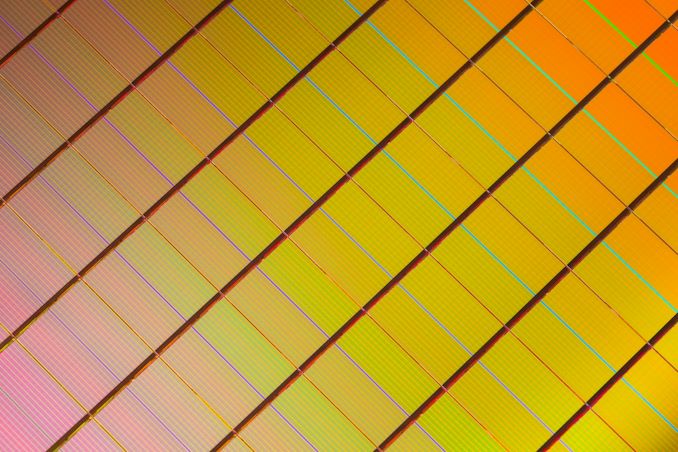

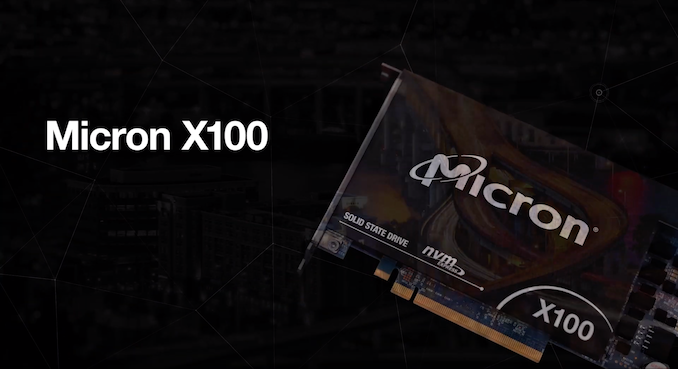

 Quote
Quote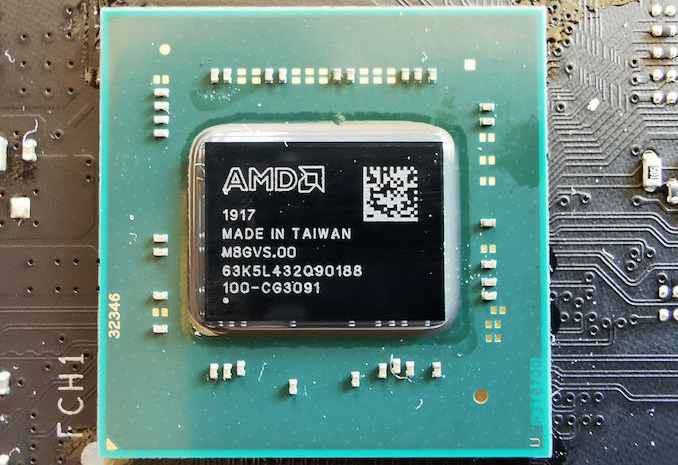

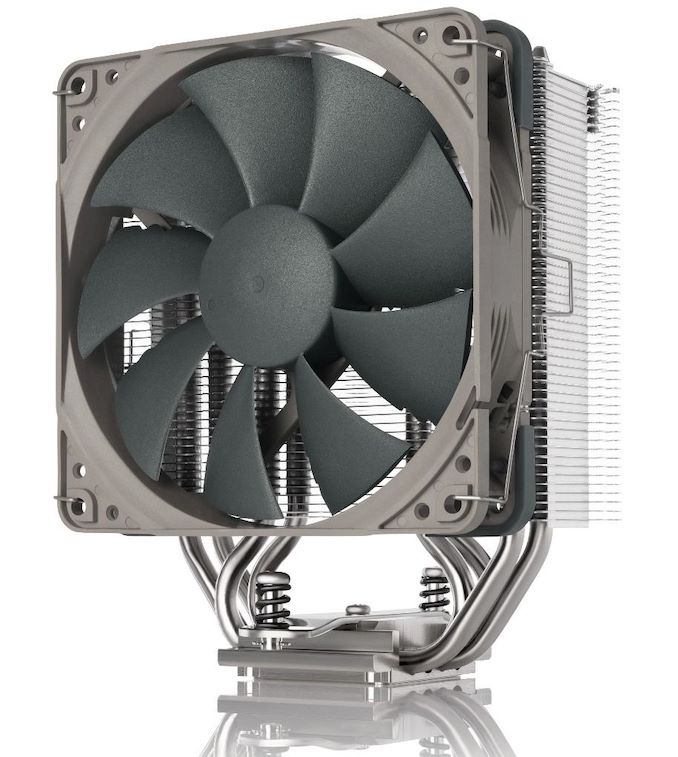
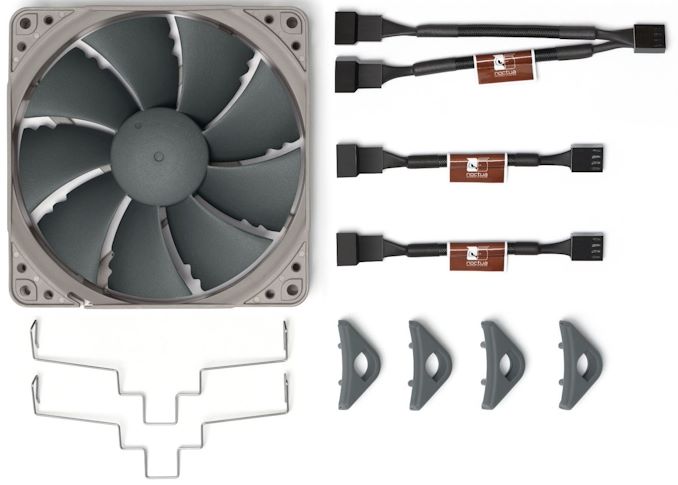
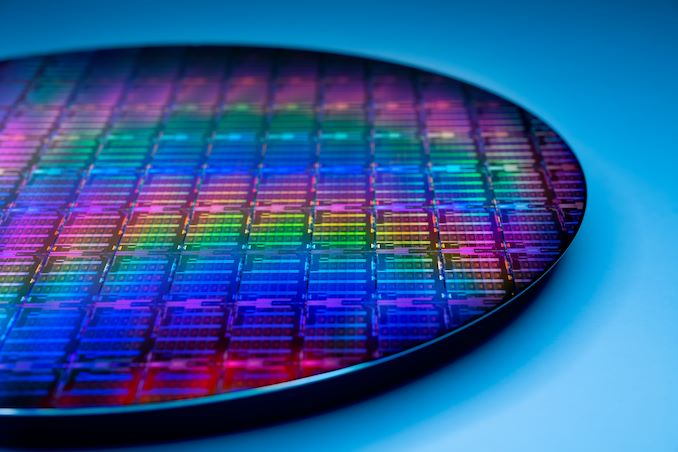
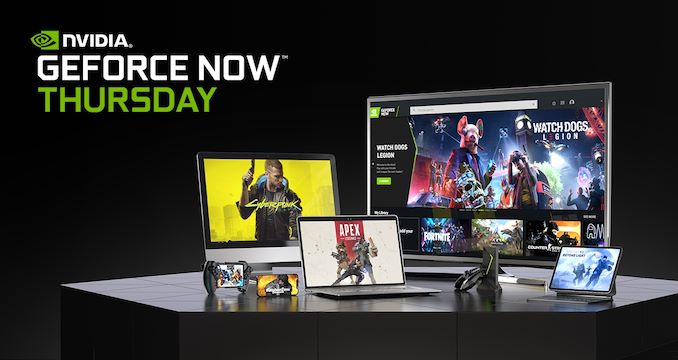

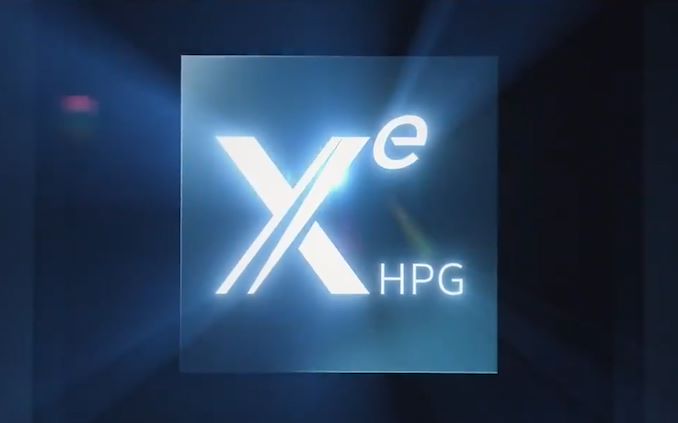
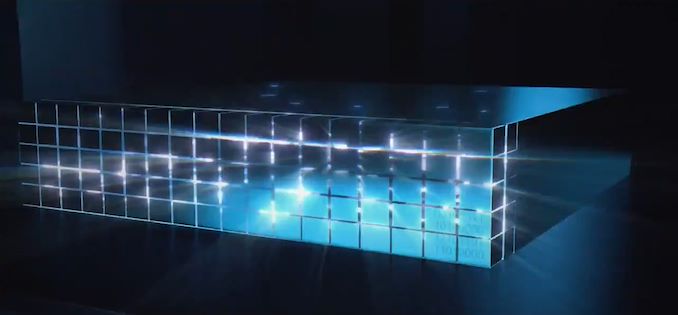

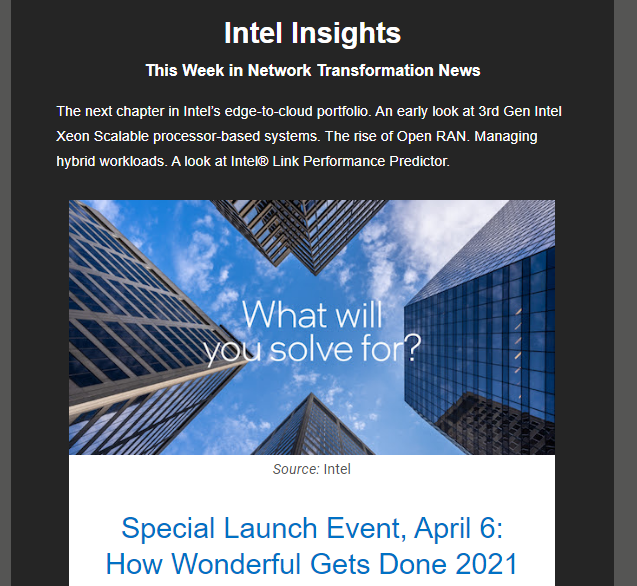


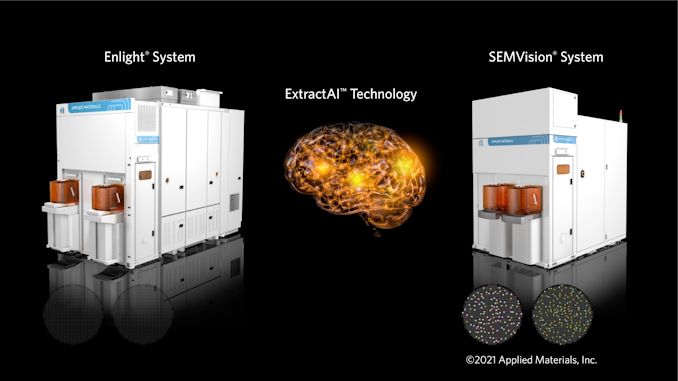
















Bookmarks